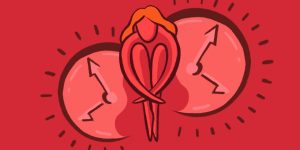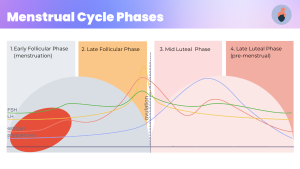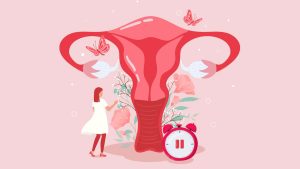Introduction For many women, health routines feel like a puzzle. Some days, your workout seems to flow smoothly, while on other days, even small exercises can feel exhausting. Your cravings, appetite, and mood also shift throughout the month. Traditional fitness plans rarely consider these patterns, but a concept called cycle syncing offers a refreshing approach.
Introduction
For many women, health routines feel like a puzzle. Some days, your workout seems to flow smoothly, while on other days, even small exercises can feel exhausting. Your cravings, appetite, and mood also shift throughout the month. Traditional fitness plans rarely consider these patterns, but a concept called cycle syncing offers a refreshing approach. It aligns your workout schedule and diet with the natural phases of your menstrual cycle to Boost Energy, balance hormones, and reduce monthly discomfort.
The idea behind cycle syncing is simple: your body changes throughout the month, and your fitness and food choices can adapt in response. While it may sound daunting, many women find it empowering. Instead of pushing through fatigue during tougher cycle days, you tailor your routine to your body’s unique hormonal rhythms. This approach can help you avoid burnout, achieve more consistent weight management, and even lower symptoms of PMS. Most importantly, it respects your body’s signals, allowing you to feel more in tune with yourself.
What Is Cycle Syncing and Why Does It Matter?

Image by: Yandex.com
Cycle syncing is an approach that modifies exercise plans and nutrition based on the four phases of the menstrual cycle. While each phase has distinct hormone levels, most standard fitness routines ignore these fluctuations. This can sometimes lead to fatigue, frustrating weight changes, or unexplainable mood shifts. By acknowledging the hormonal flow—menstrual, follicular, ovulatory, and luteal phases—you can tailor your routine to align better with your body’s strengths and vulnerabilities.
The Four Phases of the Menstrual Cycle

Image by: Yandex.com
Before diving into the specific diet and workout suggestions, it helps to grasp the broad hormonal picture. The menstrual cycle can be broken down into four distinct phases:
- Menstrual Phase (Days 1-5, on average): This is when you have your period. Hormone levels, particularly estrogen and progesterone, are at their lowest, which can make you feel more tired and sensitive.
- Follicular Phase (Days 6-13): Right after your period ends, estrogen begins rising, gradually boosting energy. This can be an optimal time for heavier workouts.
- Ovulatory Phase (Around Days 14-16): Estrogen peaks, and many women feel an energy surge. This window is often ideal for intense exercises like HIIT.
- Luteal Phase (Days 17-28): Progesterone rises, and you may experience more hunger or cravings. As the phase progresses, energy might drop slightly, so gentler forms of activity can be useful.
Note that the exact lengths of these phases can vary from one person to another. The general idea is to adapt your fitness routine and meal planning to each phase’s hormonal environment.
Tailoring Workouts to Each Phase

Image by: Yandex.com
Menstrual Phase
When your period starts, you may notice lower energy and potential cramps or discomfort. During these days, focusing on gentle movements, such as yoga, stretching, or low-impact walks, can ease tension without pushing your body too hard. Some women do manage moderate workouts on certain days if they feel okay. Still, listening to your body is key. If you are fatigued or in pain, do not force an intense session. Rest days or lighter activities may benefit overall hormonal health.
Follicular Phase
As estrogen begins to climb, you will likely feel an uptick in energy. This makes it a great time to try new workouts or increase intensity. Strength training or cardio intervals can feel more rewarding and less draining. Your body tends to handle stress hormones better when estrogen is in a healthy range. You can capitalize on this phase by challenging yourself with heavier weights or longer runs, as your body may recover faster, leading to better results.
Ovulatory Phase
This is often the shortest phase, but it packs the most punch. With estrogen at its peak, many women experience a surge in confidence and stamina. High-intensity workouts, sprints, or group fitness classes can be particularly motivating now. You might see personal records in strength or speed. This phase is also ideal for social workouts, as you may feel more communicative and outgoing.
Luteal Phase
After ovulation, progesterone becomes more dominant. Early in this phase, you can still maintain a moderate or balanced workout routine. However, as you get closer to your period, energy might dip. You might be more prone to water retention or mood changes. Switching to lower-intensity activities, such as pilates, swimming, or brisk walks, can help keep you active without overstressing your body. This is also when you might focus on extra rest or a bit more self-care, allowing your hormones to reset.
Adapting Your Diet to Hormonal Fluctuations

Image by: Yandex.com
Menstrual Phase Nutrition
Some people have reduced appetite or specific cravings during their period. Hydration is crucial, especially if you feel bloated. Warm, nourishing meals that include iron-rich foods can support healthy red blood cell counts. Light soups, stews, or lentils may be comforting and easy to digest. You may also benefit from foods rich in minerals like magnesium to lessen cramps.
Follicular Phase Nutrition
As estrogen rises, your metabolism might shift, and you might find you do not crave heavy meals. This phase is perfect for fresh fruits, vegetables, and lean proteins. Add fiber from whole grains, such as quinoa or brown rice, for stable energy. Think of colorful salads or stir-fries. You can also incorporate fermented foods like yogurt or kefir, which may help gut health and promote balanced hormones.
Ovulatory Phase Nutrition
During these few days, you might have strong energy and a bright mood. Keep it going with balanced meals that contain protein, healthy fats, and carbs. Avoid skipping meals because your body needs fuel for high-intensity activities. Foods like avocados, nuts, and seeds can offer healthy fats, supporting overall hormonal balance. Lean proteins like chicken or fish help muscle recovery after tough workouts. Focus on variety and hydration to sustain performance.
Luteal Phase Nutrition
With rising progesterone, you may feel hungrier, especially for carbs or sweets. Opt for complex carbs like sweet potatoes or oatmeal to manage cravings while providing nutrients. You can also include magnesium-rich foods, such as spinach, to help with mood balance. This is a good time for comfort foods that are still healthy, like baked salmon or roasted vegetables. Limiting caffeine and salty snacks might help reduce bloating and irritability.
Table: Cycle Syncing at a Glance
Below is a quick snapshot of cycle syncing suggestions for each phase:
| Phase | Hormones Dominant | Suggested Workouts | Diet Focus | Key Tips |
|---|---|---|---|---|
| Menstrual | Low estrogen, low progesterone | Gentle yoga, walks, light stretching | Iron-rich foods, warm soups, hydrate well | Prioritize rest if energy is low |
| Follicular | Rising estrogen | Strength training, moderate cardio | Fresh fruits, lean proteins, whole grains | Explore new routines, balanced meals |
| Ovulatory | Peak estrogen | HIIT, intense cardio, group classes | Balanced macros, healthy fats, protein | Make use of high energy and mood |
| Luteal | Higher progesterone | Low-impact, pilates, brisk walks | Complex carbs, magnesium-rich foods | Manage cravings, add self-care |
This table summarizes how you can adapt workouts and meal planning based on each cycle phase.
Tips for Getting Started with Cycle Syncing

Image by: Yandex.com
Many people hesitate to adopt cycle syncing because it seems like extra work. But it can be simpler than you think. Begin by tracking your cycle using a calendar or a mobile app. Note when your period starts, how you feel during each phase, and what your energy levels are like. This practice helps you see patterns. Over time, you can time your heavier workouts during your follicular or ovulatory phases, and schedule gentler routines as you approach your period.
Addressing Common Concerns
People often worry that scheduling their lives around their menstrual cycle might feel restrictive. Yet cycle syncing is about learning to cooperate with your body rather than fighting it. It does not mean you have to skip your favorite boot camp class if it lands on the wrong week. It just suggests modifications. If you feel great, go ahead and push harder. If you feel tired, consider an alternate routine. The key is awareness and flexibility.
Potential Benefits of Cycle Syncing

Image by: Yandex.com
When done consistently, cycle syncing can yield several advantages. It can reduce menstrual discomfort by aligning workouts and meals with your body’s needs. Many women report fewer mood swings, milder cramps, or even improved skin. Adjusting exercise intensity can lower stress and the risk of overtraining. If you are aiming for weight management, tackling cravings head-on in your luteal phase may help stabilize your diet. You might also notice better recovery and muscle performance by matching high-intensity sessions to your strongest days.
Conclusion
Cycle syncing is an innovative way to adapt both Workouts and Nutrition to the shifting hormones of your menstrual cycle. Instead of following a static plan, you recognize the natural ups and downs in energy, mood, and cravings. By matching physical activities and dietary needs to these phases, you can enjoy improved strength, clearer thinking, and reduced discomfort.






















